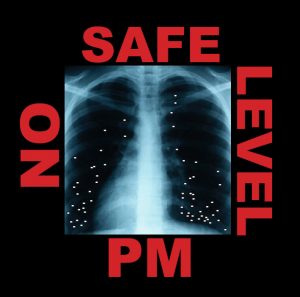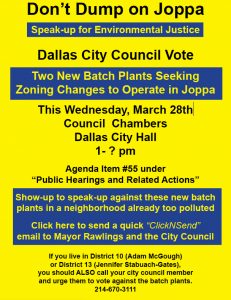Posts by jim
Tell the Dallas City Council to Stop Dumping on Joppa Before Tomorrow’s Batch Plant Vote – in 30 Seconds
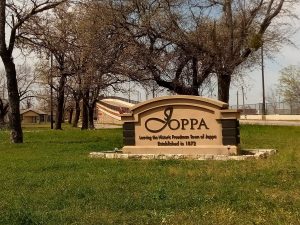 On Wednesday the Dallas City Council ill vote on whether to allow TWO new concrete bath plants in the tiny former freedman’s community of Joppa.
On Wednesday the Dallas City Council ill vote on whether to allow TWO new concrete bath plants in the tiny former freedman’s community of Joppa.
Already surrounded by heavy industry and a rail yard, these plants are opposed by the majority of Joppa residents, as well as their city council representative. Yet, it could be a close vote because of Business As Usual in South Dallas. i.e selling out the community’s health in return for “community development” money.
Don’t let it be a close vote. CLICK HERE to send an email message today telling Mayor Rawlings and the entire council you oppose these batch plants, the South Dallas Business As Usual approach, and the continuing legacy of environmental racism that still affects thousands of residents.
Tell the council to vote no. It takes only a few seconds but will mean a lot to the folks in Joppa. Thanks,
In Memory of Those That Showed-Up
Harriet Irby and Ann Trenton were not exactly local social activist celebrities, but they were well-known among the circle of more or less full-time environmental volunteers and organizers in Tarrant County and thereabouts.
Both Harriet and Ann were based out of Arlington, and were incredibly civic-minded, but that’s not what they had most in common, or what made them valuable to change-makers like Downwinders.

Ann Trenton
They both had a certain reputation: Harriet and Ann showed-up when you needed them to. Anywhere. Anytime. They were…reliable protesters. Which makes their separate-but-collective losses in the last two weeks or so especially noticeable.
Need to fill a room for a state permit hearing? Need a letter sent to the city council? These women were on it. Every single time. Or so it seemed.
Your imagination may soar with clever protest plans or tsunami-like social media campaigns, but at the end of the day you always need people to show up to make it work, or those lofty plans crash with a thud. These women showed-up.
In our College of Constructive Hell-Raising, we teach persistence as an under-appreciated quality of Change. People just don’t understand how long the road can be to where they want to go. Harriet and Ann knew, and so they made Change their lifework. They weren’t just passing through. They were passing milestones in lives lived for Change.
It seems like both have been on our mailing list for most of our 24 years. We can’t remember end-of-the-year mailings where we didn’t peel off their address labels and stick them on envelopes. Because they were reliable donors as well. Not just to us, but to a host of other groups and causes. All of whom now have large holes in their lists now too.

Harriet Irby
It’s particularly hard to imagine not hearing Harriet harangue officials at air quality meetings any more – she was a good haranguer. Because she seemed so frail and towed an oxygen tank around – a non-smoker with COPD – there was a tendency for officialdom to give her lots of slack…which she promptly took and ran with until the slack ran out and the line cut. If she couldn’t get out of the house that often and do other things for the cause, she would at least use her damn infirmaries to gain political advantage when she could.
The country needs more Harriets and Anns, not fewer, and so one would like to think that among the throngs of newly-motivated-to-act teens that the current administration has produced, there are some who already understand the value of just showing-up…for the rest of their lives. Rest in Peace Harriet and Ann – although it’s just as likely you’ve probably already started a project or campaign that will keep you busy for awhile.
City Hall’s REAL response to West Dallas “Recycling” Fire? Let the EPA call the TCEQ in Fort Worth
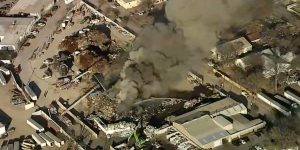
Move along. Nothing to be alarmed about. We asked the manager.
Back on December 11th, there was a serious fire at the “Sunshine Recycling” facility in West Dallas, aka, another West Dallas scrap and junk yard. Beginning at around 3 in the afternoon and continuing to burn overnight, it produced huge clouds of dark thick smoke that covered whole blocks and could be seen for miles on its way toward Irving. There were still “hotspots” requiring attention the morning after, 20 or more hours after ignition.
A Dallas Fire Department spokesperson reported cars, appliances and “other scrap” were burning with intensity.
So if you lived in the neighborhood, you might have been relieved to see your local city council member post on his FaceBook page that “The Fire Dept has conducted testing and there is no hazardous materials burning.”
You might have been reassured to hear the authorities claim, and news media report, that a Dallas Fire Department Hazardous Materials Team was on site.
But none of that was true.
After a lengthy Open Records Act request by Downwinders, many phone calls and emails, we can now piece together what really happened. The Dallas Fire Department never showed up with its Hazardous Mat unit. It never did any air monitoring at the fire. It did no testing.
Instead, at some point that afternoon, as she looked out her window at FountainPlace downtown and saw the fire’s plume wafting only a few miles away, Superfund Division Chief Susan Webster at the Regional EPA office called the Texas Commission of Environmental Quality’s regional office in Fort Worth and asked the state to send someone over to monitor the fire’s smoke. Whether she did this knowing the Dallas Fire Department had already decided not to do any air monitoring itself, or whether is was double-checking is not known. Ms. Webster wouldn’t return our phone calls.
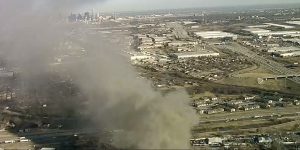
Was seeing this plume from her downtown office building what caused EPA’s Susan Webster to request TCEQ monitoring?
At around 4:30 pm Dallas Fire Department dispatch notes a call from “PCAQ” asking whether the City’s own Haz Mat team was on site and whether any air monitoring was going on. Ted Padgett, a Chief with the DFD, says that “PQAC” was really the “TCEQ” but was misunderstood on the phone.
Told no testing was going on, the TCEQ regional office in Fort Worth begins to assemble a site team and get their own monitoring equipment packed to go – hand held portable monitors.
This is the TCEQ side of that call: “TCEQ staff confirmed, via media coverage and contact with the Dallas Office of Emergency Management (OEM), that a fire was occurring at a scrap metal yard in Dallas. However, staff could not confirm the status of the fire nor what specifically was burning.” Emergency response in the Information Age.
The TCEQ monitoring team shows up in West Dallas at 6 pm – three hours after the fire has started.
Once there, the TCEQ monitoring team has the capabilities to monitor two pollutants: Particulate Matter (PM) and Volatile Organic Chemicals, or VOCs. They took one background sample away from the fire and four samples of about five minutes apiece downwind of the smoke.
The team says it doesn’t find significant VOCs in the air, but of course it’s possible those kinds of highly flammable materials like Benzene (via gas lines and tanks in the burning cars) had already been burned off. The category of VOCs is broad and covers a lot of sins, but it’s not the definitive list of “toxic chemicals” by a long shot. We know burning plastic will produce lots more Dioxins and Furans – the stuff that made Agent Orange so deadly. We know PM pollution can carry lots of bits of metals and other chemicals on them.
We know this because there was a very similar, if slightly more bureaucratic 21-year continuous incineration of car parts, plastics, used oil, dashboards, and scrap at the TXI cement plant in Midlothian, just south of the Tarrant/Dallas County lines. When you look at the before and after volumes of weird laboratory-induced chemical names you can’t really pronounce coming out of the stacks at tests controlled by the company, there’s no question burning junk fills the air full of junk too.
But it you don’t look for it, you won’t find it.
TCEQ was only looking for two kinds of pollutants that night, so it didn’t find anything else. It didn’t even bother to collect PM samples for “chemical characterization” – that is, determine what, if any, toxic baggage like lead or arsenic the PM particles were allowing to hitch a ride on them during the fire. Without such samples, it’s impossible to say the plume was not “toxic” in the “Really-Bad-For-You,” traditional regulatory meaning of that term.
Then there’s what the TCEQ team did find.
TCEQ recorded only four PM samples the whole evening. Half were alarmingly high: 113 ppb near the intersection of Singleton and Westmoreland, over three miles away, and 180 ppb near the intersection of Chalk Hill Road and Singleton between one and two miles from the fire.
Two other samples, one taken way north along Bernal And Hammerly, and further south down Westmoreland at Canyon Bluff showed “background” levels of PM at 14 ppb and 18 ppb respectively.
The EPA annual standard for PM exposure is 12 ppb, the daily standard is 35 ppb. The results from two of the four samples TCEQ took were three and five times the daily standard. That’s “toxic” in the “Science-Says-That-Stuff-Will-Kill-You” way.
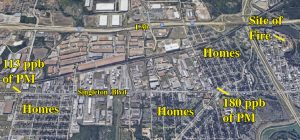
The TCEQ inspectors left after only about an hour. No other monitoring took place for the duration of the fire, which was still going the next morning. So out of approximately 20 hours the incident lasted, only one was monitored.
TCEQ did note that the wind was out of the West at 10 mph and that “Potentially Impacted Receptors” included residences and businesses between Highway 12 and I-30.
There’s no record of the Dallas Fire Department, or anyone at Dallas City Hall, asking for the TCEQ’s monitoring results and TCEQ never sent them to anyone there. It wasn’t until Downwinders requested the results through an Open Records Request that any member of the public had seen the full record of what was done.
But some West Dallas residents complained about health effects from the fire to State Senator Royce West. One email the Senator got related how the fire had caused “my throat to become scratchy, coughing …. The smoke was so thick it hovered over all of West Dallas. The smell was horrific, very strong & lingering. You could smell it from loop 12 & all over West Dallas & I’m sure the lingering included other local surrounding areas in our city. The fire department said by it being cold outside, it causes the materials burning & the smoke in the air to continue to stay low where it affects us when breathing.“
Senator West’s office wrote a letter to the TCEQ regional office asking about what they’d found when they did their air monitoring. Here’s the reply he got:
“Smoke is a complex mixture of gases and fine particles. While the main pollutant of concern in smoke is the particulate matter, smoke may also contain other pollutants that are dependent on the product that is burnt, the moisture content of the product, and the fire temperature. Particles from smoke are often very small in size and have diameters that are 2.5 micrometers and smaller (PM 2.5). These particles are respiratory and eye irritants. Short-term exposures (hours-weeks) to these particles can cause headaches, respiratory (e.g., runny nose, scratchy throat, irritated sinuses, and bronchitis) and eye irritation (e.g., burning eyes). However, these symptoms typically disappear quickly once the person gets out of the smoke. Exposures to high concentrations of these particles can cause persistent cough, phlegm, wheezing, and difficulty breathing. While some people are more susceptible to the adverse health effects of smoke, particles from smoke can also cause respiratory symptoms, transient reductions in lung function and pulmonary inflammation in healthy adults. Children, older adults, and people with pre-existing heart or lung disease are more susceptible to lower levels of smoke than healthy people…(monitored) PM ranged from 0-180 ppb…..”
No mention of the scientific consensus that even short term exposure to low levels of PM can cause a host of permanent heath injuries, including brain and learning disorders, immune damage, and life-long respiratory ailments. No mention that fully half the samples taken by TCEQ were over 100 ppb and exceeded the 24-hour EPA standard for that specific pollutant. In fact, TCEQ says, all of your problems should disappear once you get out of the smoke – or your house, if the smoke from the toxic fire down the street is making it unlivable.
There’s an email from a TCEQ Special Assistant to the Deputy Director in Austin that asks: “…is there any way to put the highlighted PM detection in context….is this the level we would normally expect to find in smoke; at what level would we take action, can hand-held equipment quantify, etc?
She didn’t get a reply to those questions that we saw. Probably because no one at the Austin or Fort Worth TCEQ offices really knew the answers, or didn’t want to write them down and send them to a State Senator.
TCEQ was able to tell the Senator West that, despite plastics and metals and other materials on-site capable of producing toxic smoke, there were “no hazardous chemicals” on-site or involved in the fire.
How did it know? TCEQ inspectors asked the manager of the facility. There was no independent inspection.
And that, Dear Citizens, is how you’re protected by potentially toxic fires in Dallas, Texas. Feel safer?
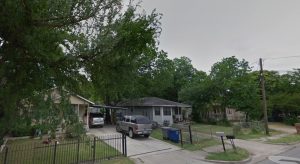
Homes along Singleton probably exposed to some of the worst fallout of the December 11th fire.
Along with the high PM levels our PM Committee found in Joppa, this incident is another case study of why Dallas should have its own 24/7/365 dense network of air quality monitors – monitors that will be there when such a fire starts, as well as when it’s finally extinguished. Monitors who won’t make the value judgement about when the A Team should be called out. Because along with all the other questions this response poses you have to ask yourself if something like this happened in Preston Hollow or Uptown, would the Dallas Fire Department have still shown-up without its hazardous materials crew in tow?
This incident is Exhibit A why Dallas should also be incorporating public health into emergency responses. Why doesn’t the Fire Department have access to its own toxicologist or public health expert who could tell them what to sample for, where to sample, and whether the fire really posed any concern to neighbors or not? Why isn’t the automatic response to a fire like this to send out its own hazardous materials team instead of outsourcing it to TCEQ, 30 minutes away in Fort Worth?
December 11th allows us to peak behind the the modern post 9/11 facades of “Public Safety” and “Emergency Response” we all take for granted and see what a decrepit cynical reality is in charge of assuring us that “there’s no reason to be concerned.” That’s why we need a new reality.
On Eve of Council Vote, First-Ever Monitoring Finds PM Levels Already Too High in Joppa
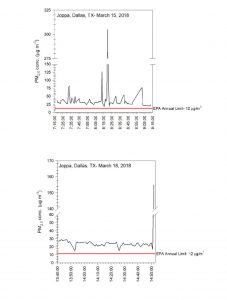 Downwinders PM Committee did the unthinkable this last week and monitored ambient air quality in the tiny Joppa community, where two proposed new concrete batch plants coming up for a Dallas City Council vote on Wednesday want to set-up shop.
Downwinders PM Committee did the unthinkable this last week and monitored ambient air quality in the tiny Joppa community, where two proposed new concrete batch plants coming up for a Dallas City Council vote on Wednesday want to set-up shop.
This was unthinkable because despite months of controversy over the siting of yet more concrete batch plants in a predominantly-minority neighborhood already jammed with heavy industry nobody had thought of doing it before our team of SWAT Citizen Scientists showed-up.
Not the batch plant operators seeking approval of their permit requests.
Not the staff of the City of Dallas, who are recommending approval of those requests.
No…it was our all-volunteer “Soot Sisters” armed with their newly acquired fully-calibrated portable PM monitors who had the audacity to actually see what levels of pollution Joppa residents were breathing now – before the addition of any new sources of bad air.
After we got our results, we kind of understand why air monitoring was unthinkable to those other folks: because the air in Joppa is often unbreathable.
Since our monitors arrived late to the scene in Joppa, we’ve only been able to get snapshots of air quality before the scheduled council vote in the 28th. Two hours on this day, another two on that day. The sample is very small, but it’s also very disturbing.
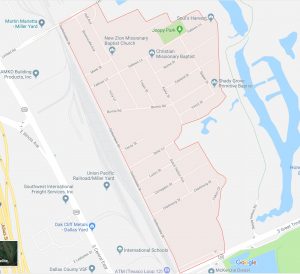
Joppa is already surrounded on three sides by heavy industry
First, they found significantly higher levels of ambient PM pollution in Joppa than was recorded by the only official EPA PM monitor in Dallas, located near Stemmons Freeway during the same time period, and higher than the levels the Committee found at various DART bus stops and routes they’ve also been monitoring as part of the new Green Streets bus electrification campaign
Levels in Joppa were as much as 30 to 50 % higher than the EPA monitor – even on a Sunday. Residents there are already breathing more PM pollution than residents in other parts of the city.
Secondly, if the Committee’s results were extrapolated over the course of a full year, these daily levels would add up to a violation of the EPA’s annual PM pollution standard. That is, if our findings are indicative of daily exposure, Joppa could already be exceeding the EPA standard and any additional PM pollution would only make matters worse.
You can read the entire short report on Joppa, Round one, prepared by Dr. Tate Barrett, our PM Science Director here: Joppa Report #1

Shannon Gribble and Cresanda Allen on a monitoring run in Joppa
Because there’s been no monitoring in Joppa until now, it’s possible the area has been in routine “non-attainment”of the EPA PM standard. It takes three years of annual averages above the standard, recorded at an officially designated EPA monitor, to classify an area as non-attainment and qualify for new federal new controls. However, Dallas’ only official EPA PM monitor is nine miles north of Joppa near Stemmons Freeway and Mockingbird.
Study after study has shown how People of Color generally, and African-Americans specifically, are disproportionately exposed to, and harmed by, PM pollution. While Dallas’ one and only EPA-designated PM monitor could be accurately recording PM levels north of the Trinity River, it’s not reflecting the reality of residents in Joppa, West Dallas, Cadillac Heights, or Cedar Crest.
There’s been a lot of discussion recently concerning inequity of resources in Dallas. It’s not news that this inequity extends even to the very air residents breathe and how the current regulatory system ignores those differences. But our Joppa monitoring casts a new spotlight on that fact. No equal protection is possible unless you have equal access to official monitors which determine enforcement of the laws.
That’s why when we turned our first results over to District 7 Council Member Kevin Felder on Friday, we recommended the City either consider moving Dallas’s sole EPA-designated PM monitor to Joppa, or pay for a second EPA-designated PM monitor to be located in Joppa, to begin recording data as soon as possible to determine if the area is indeed violating the EPA PM standard year-round.
These Joppa results also become another compelling example of why DFW needs its own local air quality monitoring network. It’s ridiculous that there’s only one PM monitor for all of Dallas County’s 2. 5 million residents stretched out over 900 square miles. PM levels as low as 5 ppb
Downwinders has joined with local universities and governments in pursuing the establishment of a local air quality monitoring network that could place inexpensive year-round PM monitors throughout Dallas and North Texas with real time information accessible to the public by a simple phone app. Dallas County Commissioner Theresa Daniels is expected to sponsor a resolution for the creation of such a network at the Commissioners Court in the coming weeks.
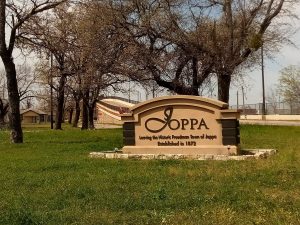 Dallas should follow. The City’s Office of Environmental Quality approves or disapproves of zoning changes like the ones being sought by the batch plants in Joppa without knowing what environmental burdens residents are already carrying. Even though they have the ability and capacity to do real time monitoring of neighborhoods where new industry wants to expand or locate, the OEQ never does. Nor does it have a single toxicologist or public health expert on its staff who’d want to see that kind of information before passing judgement on a zoning request. Instead it’s headed up by a lawyer and is mostly concerned about not making any definitive statements about local environmental health problems or environmental justice issues at all. With all the house-cleaning at Dallas City Hall since a new city manager took control, the OEQ now looks to be one of the last repositories for Business As Usual thinking. That must change.
Dallas should follow. The City’s Office of Environmental Quality approves or disapproves of zoning changes like the ones being sought by the batch plants in Joppa without knowing what environmental burdens residents are already carrying. Even though they have the ability and capacity to do real time monitoring of neighborhoods where new industry wants to expand or locate, the OEQ never does. Nor does it have a single toxicologist or public health expert on its staff who’d want to see that kind of information before passing judgement on a zoning request. Instead it’s headed up by a lawyer and is mostly concerned about not making any definitive statements about local environmental health problems or environmental justice issues at all. With all the house-cleaning at Dallas City Hall since a new city manager took control, the OEQ now looks to be one of the last repositories for Business As Usual thinking. That must change.
Downwinders PM Committee was back out in Joppa this last weekend for more rounds of air monitoring. Those results will be dowloaded and analyzed by Dr. Barrett and presented to the City Council on Wednesday by PM Committee member Misti O’Quinn. Stay tuned.
Meet Our New Scientist
 Downwinders is proud to announce UNT’s own Dr. Tate Barrett as our new PM Science Director.
Downwinders is proud to announce UNT’s own Dr. Tate Barrett as our new PM Science Director.
Dr. Barrett will be coordinating all of our PM sampling in the field using our portable monitors. That includes helping to identify potential targets, training citizens on how to use the monitors, and distilling the results into citizen-friendly summaries.
Dr. Barrett is an Environmental Science graduate of Baylor University, where he also got his PhD from The Institute for Ecological, Earth and Environmental Sciences. He’s currently a post-doctoral Research Associate at UNT and has written at least five peer-reviewed, journal-published research paper on particulate matter and black carbon.
Dr. Barrett joins fellow UNT researcher Kari Northheim, our Wise County Ozone Project Director, in bringing scientific methodology and rigor to our grassroots air monitoring efforts.
Stay tuned as Downwinders and Dr. Barrett begin to assemble a citizen workshop on how to use the portable monitors. Graduates of these workshops will be cleared to use the equipment on projects approved by him.
Downwinders Debuts New Portable PM Monitors on DART Bus Routes
Downwinders at Risk’s PM Committee wasted no time in taking our new portable Particulate Matter monitors out in the field.
Less than two weeks after their arrival from New Zealand, Misti O’Quinn, Evelyn Mayo, Mandy Poland, Shannon Gribble and Cresanda Allen were using the devices to measure PM levels at DART bus stops and DART buses around Dallas this last weekend.
The group also conducted
an informal survey of DART riders on quality on air pollution concerns.
It was all part of a new effort to focus on PM pollution and public transit in preparation for this Wednesday’s combined meeting the the North Texas Transit Riders group. at GoodWork Co-working space, 1808 Good Latimer.
Bus riders are among those most heavily exposed to PM, both because of their exposure to traffic while waiting for a bus as well as the bus’ pollution itself.
Comparison and analysis of large “stationary” sources of PM pollution show that if DART bus pollution was coming out of a single smokestack, it would be the 10th largest source of PM pollution in North Texas.
Although the monitors’ PM sampling is in real time, the data collected has to be downloaded and logged by our new PM Science Director, Dr. Tate Barrett. There may be some results ready for Wednesday’s meeting.

Two of these “Soot Trackers” Are On Their Way to Downwinders…and You
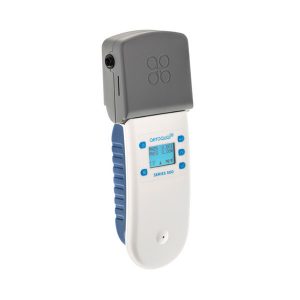 Thanks to a grant from the Simmons Sisters Foundation, Downwinders is proud to announce we’ve purchased our first two portable Particulate Matter sensors for our No Safe Level Campaign against PM pollution.
Thanks to a grant from the Simmons Sisters Foundation, Downwinders is proud to announce we’ve purchased our first two portable Particulate Matter sensors for our No Safe Level Campaign against PM pollution.
They’ll be the only PM monitors of their kind in the region, and their arrival will inaugurate a new era in DFW citizen-empowered science.
The sensors are made by AEROQUAL, a New Zealand company, and you can’t find them on Amazon. They measure both PM 10 and PM 2.5 (microns) at the same time. Their sensor heads use laser and optical sensors to measure light scattered from particles passing through the laser beam. A built-in fan ensures a stable and precise flow of sample air to the sensor. They also compensate for humidity by way of an on-board humidity sensor.
Each comes with a long-life Lithium battery which allows for 24 hours of remote operation between charges. Recharging takes just 3 hours. The monitor can be plugged-in and left to run indefinitely. Besides displaying levels in real time, measurements can be stored on the device and downloaded later to a computer via the USB cable and bundled software.
They come factory-calibrated to European Union standards and are capable of being re-calibrated for side-by-side use with an EPA monitors, or any other local baseline. 
These monitors have two parts – a base and a a detachable sensor head – making them even more useful. In the future Downwinders can buy other kinds of sensors from AEROQUAL to plug into the base and test for gaseous pollutants like Ozone, or Sulfur Dioxide. In all, 28 other sensors are available.
Before now you either had to buy $16,000 PM sensors that were fully calibrated or settle for much less reliable equipment. But the technology is moving so quickly and demand is scaling up so fast that a middle-income niche market for scientifically-rigorous instruments is beginning to provide opportunities to non-profit groups like Downwinders, and the public in general.
Along with these portable sensors, we’re also ordering stationary PM monitors as part of the regional network being established by UTD and others.
As a result of this influx of technology, Downwinders is creating a PM Project Science Director position to maintain the integrity of our research. The Science Director will be in charge of these monitors, training citizens on how to operate them, and overseeing their use in the field.
Our plans are to begin using the sensors in neighborhoods and suspected hot spots as soon as possible to help us fill out our PM Map of DFW. We want to be able to loan them out to those citizens who’ve gone through the training and have a problem they want to investigate. They’ll also be available for use during accidents, explosions, and fires.
We’re not letting state and EPA rollbacks stop us. We’re creating our own regional air monitoring network. Are you interested in joining? Stand by. We’re just getting started.
New Study Links PM Pollution to Depression and Suicide
Reviewing a decade of death statistics revealed a 16% increase in mortality risk on the first day of haze and a 27% increase on the second day compared to better air days.
If the haze was accompanied by high ozone pollution, the risk of death increased by 79%.
As shocking as this sounds, it aligns with other recent studies that have found a connection between short-term increases in air pollution and aberrant mental behavior. Significantly higher rates of Autism, Parkinson’s, ADHD and juvenile delinquency have all been linked to PM pollution, most at ambient levels assumed by regulators to be “safe.”
PM pollution has even been linked to low stock market performance in more than one study.
Researchers believe air pollution affects a person’s emotional state, making them more likely to feel depressed. They urge mental health professionals to be aware that bad air days are triggers for acute episodes.
PM pollution is so microscopically tiny it not only goes deep into your lungs, it actually can pass through your lung lining directly into your blood stream. Think about the places where your body uses a lot of blood – your heart and your brain. We’ve known PM causes heart attacks and strikes for some time. But research linking it to a wide variety of brain disorders is only fairly recent.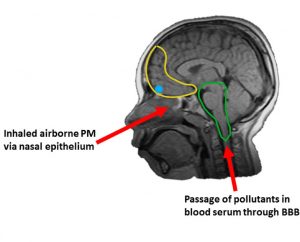
Authored by faculty at Hong Kong Polytechnic University, this most recent study examined more than 284,000 deaths, including those among people with mental and behavioral disorders including depression, bipolar, schizophrenia and dementia. It defined “haze days” as those on which pollutants gather in the air and cut visibility, usually dry days with low winds. In the study period from 2007 to 2014, there were 111 haze days when particle pollution was on average twice as high.
These findings are compatible with a recent Belgian study, which reported “[Short-term] increases in outdoor air pollutants such as particles or ozone can trigger suicide, particularly during warm periods, even at concentrations below the European thresholds.”
Unfortunately, we may have a local way to further prove this hypothesis. On October 19th of last year there was a still unexplained catastrophic air event that caused PM levels to go much more than twice a high as “normal,” accompanied by an increase in ozone pollution so severe it bumped the entire regional average by a part per billion. Could an examination of death certificates in Ellis, Dallas, Tarrant and Denton Counties reveal if this really “bad air day” caused a spike in North Texas suicides?
